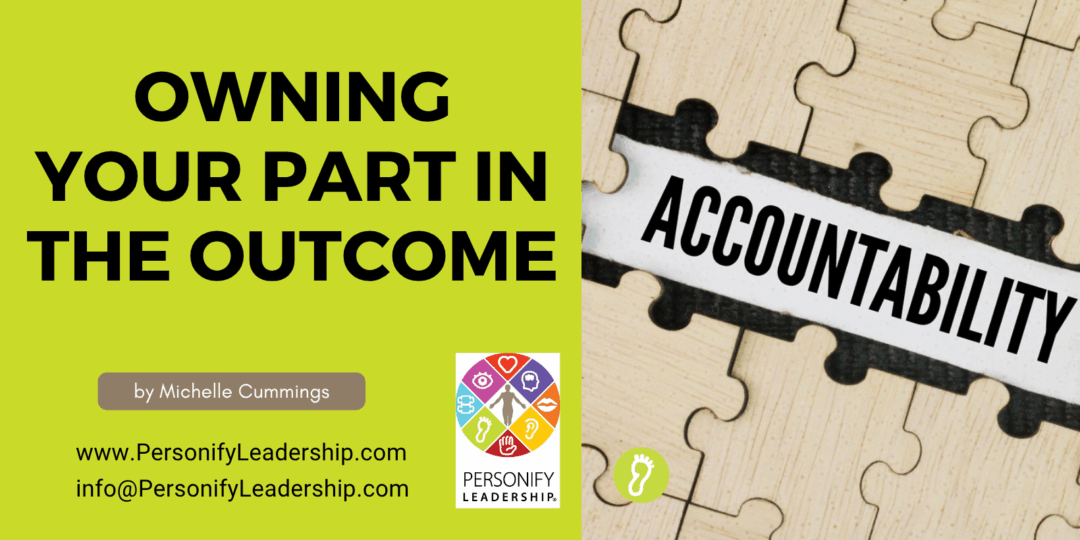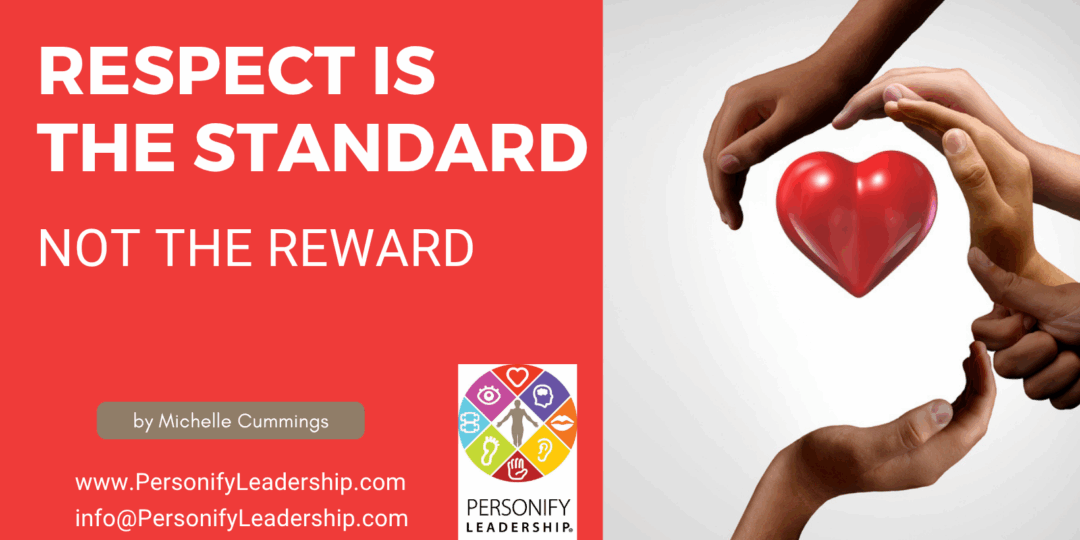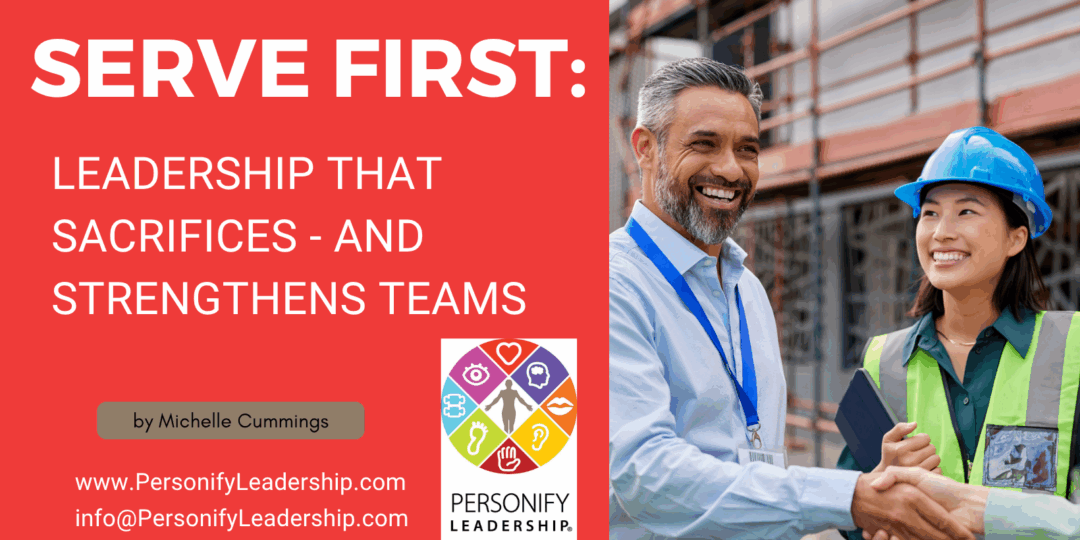Owning Your Part in the Outcome
- Jun 03, 2025
- By personifyadmin
- In Newsletters
- 0 Comments
When a plan fails or results fall short, it is human nature to look outward first. We might point to shifting priorities, lack of resources, or the actions of others. While these factors may be real, strong leaders start by looking inward. They ask themselves, “What could I have done differently?”
This mindset is not about self-blame. It is about ownership. By focusing first on your own actions and decisions, you give yourself the power to influence future outcomes. Blaming others may feel easier in the moment, but it leaves you with little control to make changes that lead to improvement.
(more…)It is easy to match the behavior we receive, especially when that behavior is unkind or passive-aggressive. A sarcastic comment may get a sarcastic reply. A cold shoulder might be met with one of your own. In the moment, it can feel like self-protection or even fairness, but it rarely leads to the outcome you want.
Mirroring negative behavior can escalate tension, damage trust, and distract from the real issue. While it may give a temporary sense of satisfaction, it often leaves you questioning whether you acted in line with your values. Leadership requires the ability to pause, reflect, and choose a better path forward.
(more…)Listening Without Leaping In
- May 16, 2025
- By personifyadmin
- In Newsletters
- 0 Comments
For many leaders, listening is not the challenge—waiting is. The moment someone shares a problem, the instinct is to offer a solution, give advice, or respond immediately. This comes from a good place, but it can unintentionally shut down the conversation before the other person has fully expressed themselves.
Real listening means resisting the urge to jump in too soon. When you move too quickly to fix or advise, you may miss important details, misunderstand the situation, or overlook what the other person truly needs in that moment. Sometimes they need answers, but other times they need understanding, validation, or space to process.
(more…)Stress spreads fast. One tight conversation, one sharp email, or one visibly tense leader can ripple through a team in seconds. Most workplaces run at a fast pace, and that pace can quickly turn into pressure. Leaders play a central role in either fueling that pressure or calming it down.
When people are under stress, their behavior changes. They may get quiet, reactive, defensive, or overly task-focused. These shifts are often subtle but easy to spot once you start looking for them. The challenge for leaders is recognizing those signs and responding in a way that helps, not harms.
(more…)Every leader has team members who shine and some who struggle. It’s easy to give praise, attention, and respect to top performers. But true leadership shows up in how you treat everyone, regardless of title, status, or success.
When respect is conditional, trust starts to break. People begin to wonder if their value depends on their last win. They become more cautious, less engaged, and more focused on staying safe than taking risks. But when respect is consistent, people feel safe enough to show up fully, make mistakes, and keep growing.
(more…)Serve First: Leadership That Sacrifices – and Strengthens Teams
- May 01, 2025
- By personifyadmin
- In Newsletters
- 0 Comments
by Michelle Cummings
True leadership is revealed not in ease, but in moments of pressure – especially when a choice must be made between personal comfort and collective good. Taking actions that serve others, even when it requires personal sacrifice, is one of the most powerful ways leaders build lasting influence and trust. It sends a message that others matter, not just in theory but in practice.
When leaders consistently put the needs of their team ahead of their own, something shifts. Teams notice. They begin to internalize the message that the leader’s priority isn’t ego – it’s impact. That shift creates safety, loyalty, and motivation. People start leaning in, taking more initiative, and collaborating more authentically because they know their efforts are supported, not exploited.
(more…)Preparation: The Secret to Better Difficult Conversations
- Apr 29, 2025
- By personifyadmin
- In Newsletters
- 0 Comments
Tough conversations are part of leadership, but their outcome often depends on what happens before you sit down to talk. Walking into a sensitive discussion without preparation can lead to unclear messages, heightened emotions, and missed opportunities for resolution. Taking time to plan both what you want to say and how you want to say it can make all the difference.
Preparation starts with clarifying your purpose. Ask yourself, “What is the main point I need to communicate?” and “What outcome do I want from this conversation?” Having these answers in mind keeps you focused and prevents the discussion from drifting into unrelated issues.
(more…)Goals Are Guides, Not Chains
- Apr 22, 2025
- By personifyadmin
- In Newsletters
- 0 Comments
Setting goals is an essential leadership skill, but reaching them is rarely a straight path. Priorities shift, feedback reveals blind spots, and progress may unfold differently than expected. Leaders who treat goals as living guides rather than rigid commitments can adapt and keep their teams on track.
Reviewing goals regularly allows you to catch misalignment before it becomes a problem. A goal that made sense six months ago may no longer serve the organization’s needs today. Without check-ins, teams risk pouring time and resources into work that no longer matters most.
(more…)Seeing Leadership from Every Angle
- Apr 08, 2025
- By personifyadmin
- In Newsletters
- 0 Comments
Every role in an organization comes with unique pressures, priorities, and blind spots. Leaders at the top carry the weight of strategic vision and overall performance. Those in middle management balance the demands of senior leadership with the needs of their teams. Frontline employees handle the day-to-day work that keeps the organization moving, often without full visibility into the bigger picture.
Understanding these perspectives is critical for effective leadership. Without it, communication can break down, assumptions can build, and decisions can be made without fully considering their impact. Leaders who take time to learn the realities of different roles are better equipped to bridge gaps and align the entire organization.
(more…)
Tag: Intentional leadership
© 2012-2025 Personify Leadership. All Rights Reserved.










Recent Comments